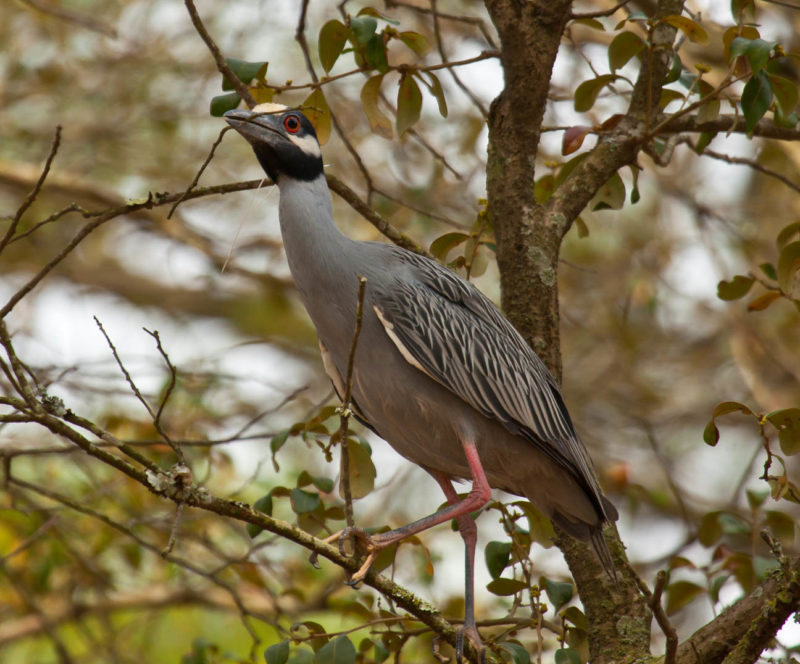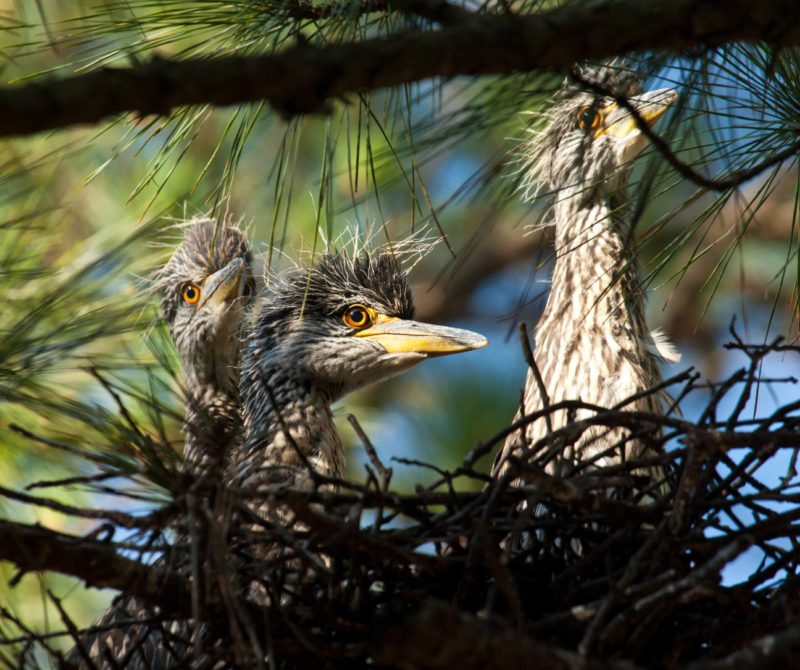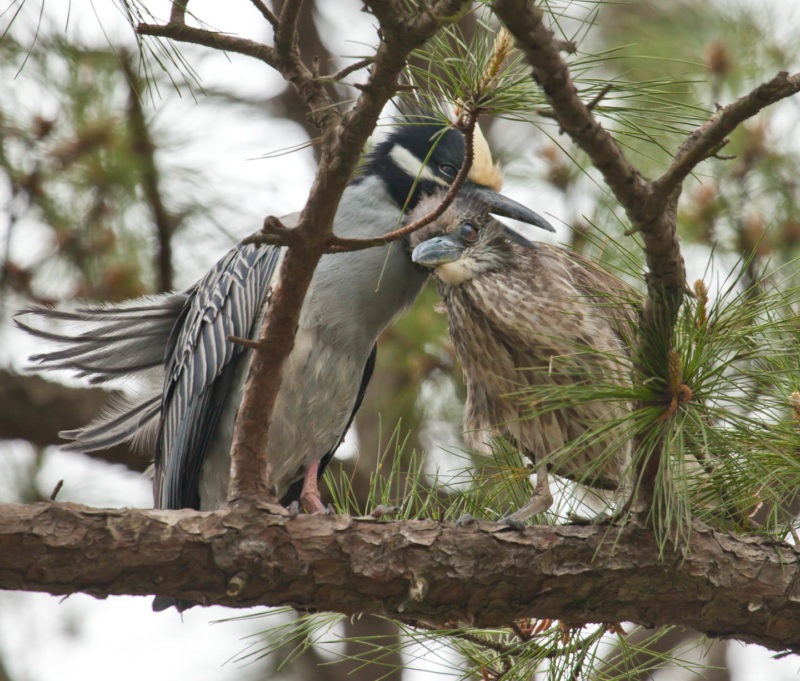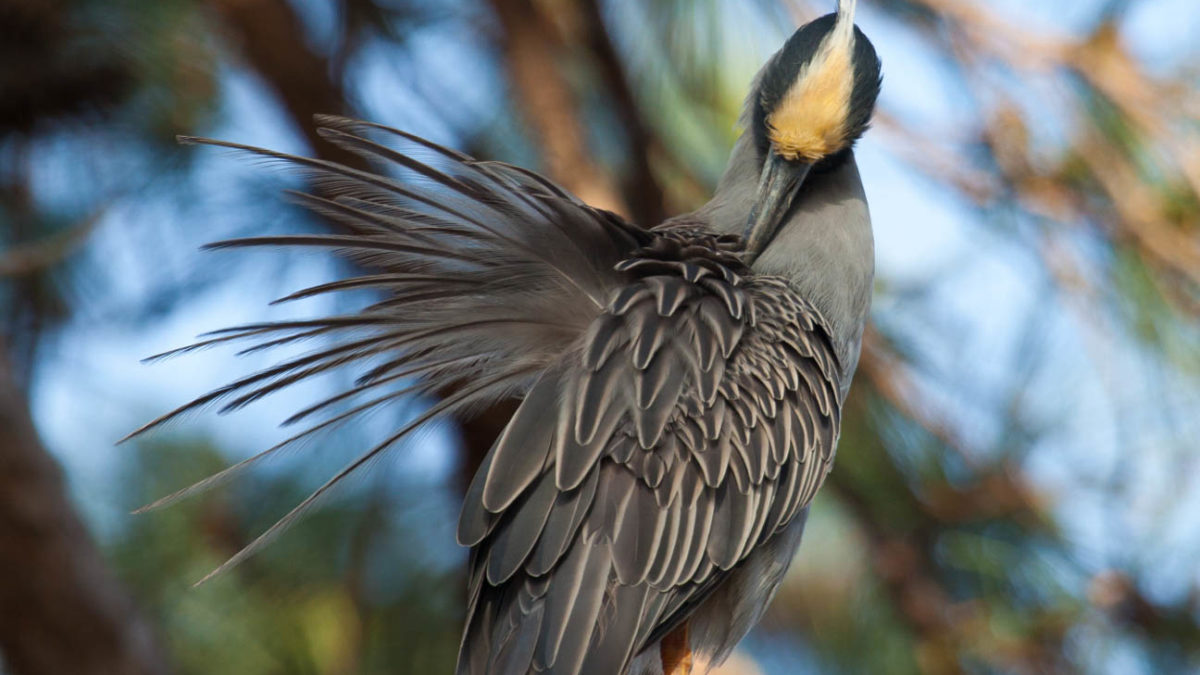Yellow-crowned night-herons thrive along the Lafayette River

Laughing gulls continue to lose ground
October 3, 2023
The resilient eagles of Jamestown
October 3, 2023By: Bryan Watts
9/29/23
The yellow-crowned night-heron has found its sweet spot along the Lafayette River in Norfolk, VA. The species expanded its breeding range north along the Atlantic Coast into Virginia during the late 1940s. Constance (Connie) Simons du Pont Darden found the first pair in the mid-Atlantic region nesting on her property (Flicker Point) along the Lafayette. Over the next 15 years, a breeding colony formed and Mrs. Darden (former first lady of Virginia) filmed courtship and nesting behavior from the ground and from a third story window of their home. She showed her films to bird groups throughout the region, educating them about birds and nesting behavior. From 1960 through 1969, Connie compiled extensive daily notes on individual nests within the colony, detailing migration and breeding seasonality, nesting success and behavior.
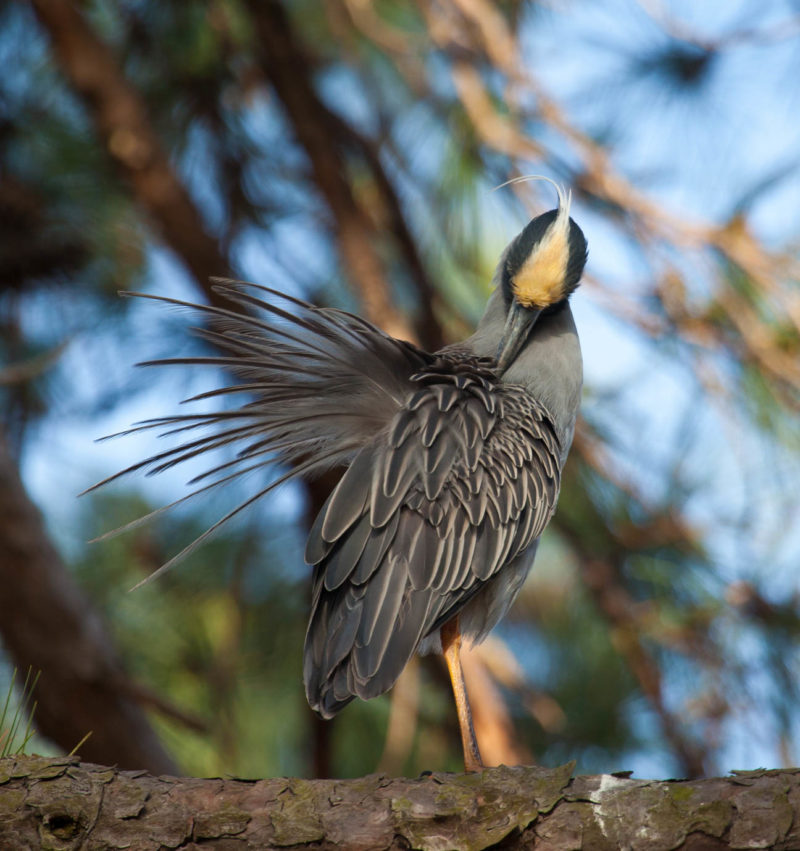
The Center has surveyed yellow-crowns along the Lafayette since 1985. The number of pairs and colonies have increased dramatically over the years. In 1962, Mrs. Darden surveyed two colonies supporting less than 20 pairs. During this past breeding season, The Center documented 31 colonies supporting 191 pairs. All of these colonies are integrated within residential neighborhoods.
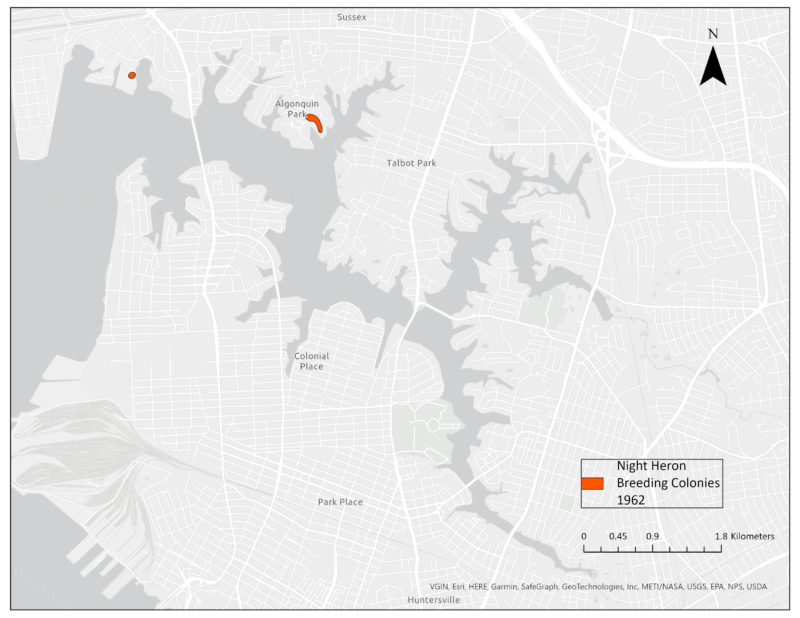
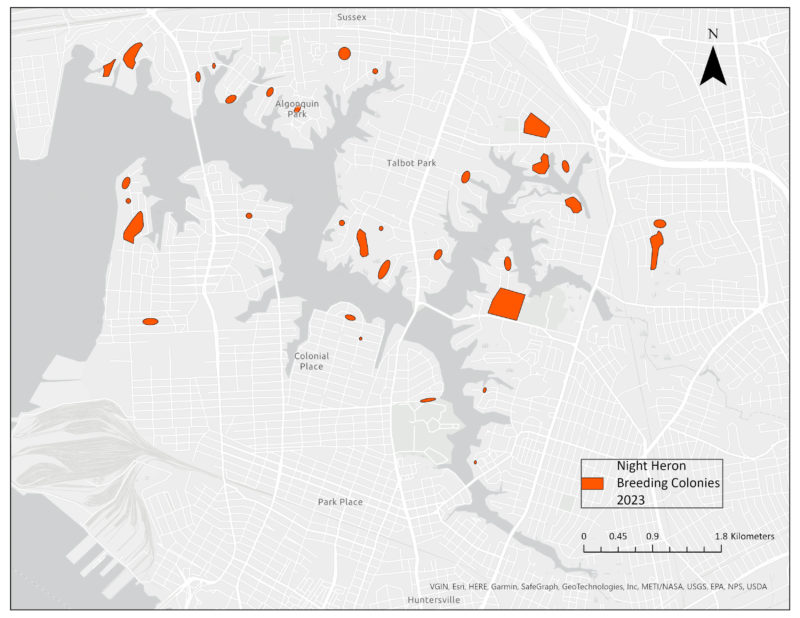
Yellow-crown colonies along the Lafayette are distributed around available marsh patches that support fiddler crabs, their primary prey. Most of the colonies are associated with loblolly pines that are between 40 and 80 years old. These pines have the lower horizontal branches that yellow-crowns require for nesting. As the pines get older and lose these horizontal branches, the birds will move on. The shift in pine ages throughout the watershed has led to shifts in colony locations over the decades.
